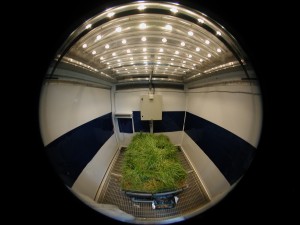Except for days when spring rains cause earthworms to sprawl on the sidewalks, life below ground generally goes unnoticed. Yet, a recent study led by Mark Bradford, Associate Professor of Terrestrial Ecosystem Ecology, indicates that tiny soil critters like earthworms have profound impacts on ecosystem processes, suggesting that broader issues of agricultural management and land use changes may hinge upon soil life.
According to Bradford, the study was motivated by the fact that “we know little about how soil biology links to other components of ecosystems.” To explore this question, researchers constructed small grassland replicas and included soil animals in only some replicas. The experiment was conducted in climate-controlled chambers, enclosures that reproduce conditions such as rainfall and temperature. As Bradford explained, this set-up allowed them to “simulate the complexity of the real world often lost in conventional laboratory experiments but maintain a level of control sacrificed in field research.”
Over the 500-day experiment, the elimination of soil animals markedly shifted the diversity of plant species, decreased overall productivity, and reduced responsiveness to fertilization. However, plant quality, or protein content, actually increased with the loss of soil organisms, hinting at complex interconnected relationships between soil organisms and ecosystem processes.
According to Bradford, the intricacy of these feedback processes mean that their implications for agricultural management are not straightforward and “really depend on what you are using the land for.” For instance, for grazing cattle, one must consider the increased protein content that accompanies loss of soil animals. Regardless, the study illuminates the deep dependence of what surrounds us on what lies beneath our feet.

